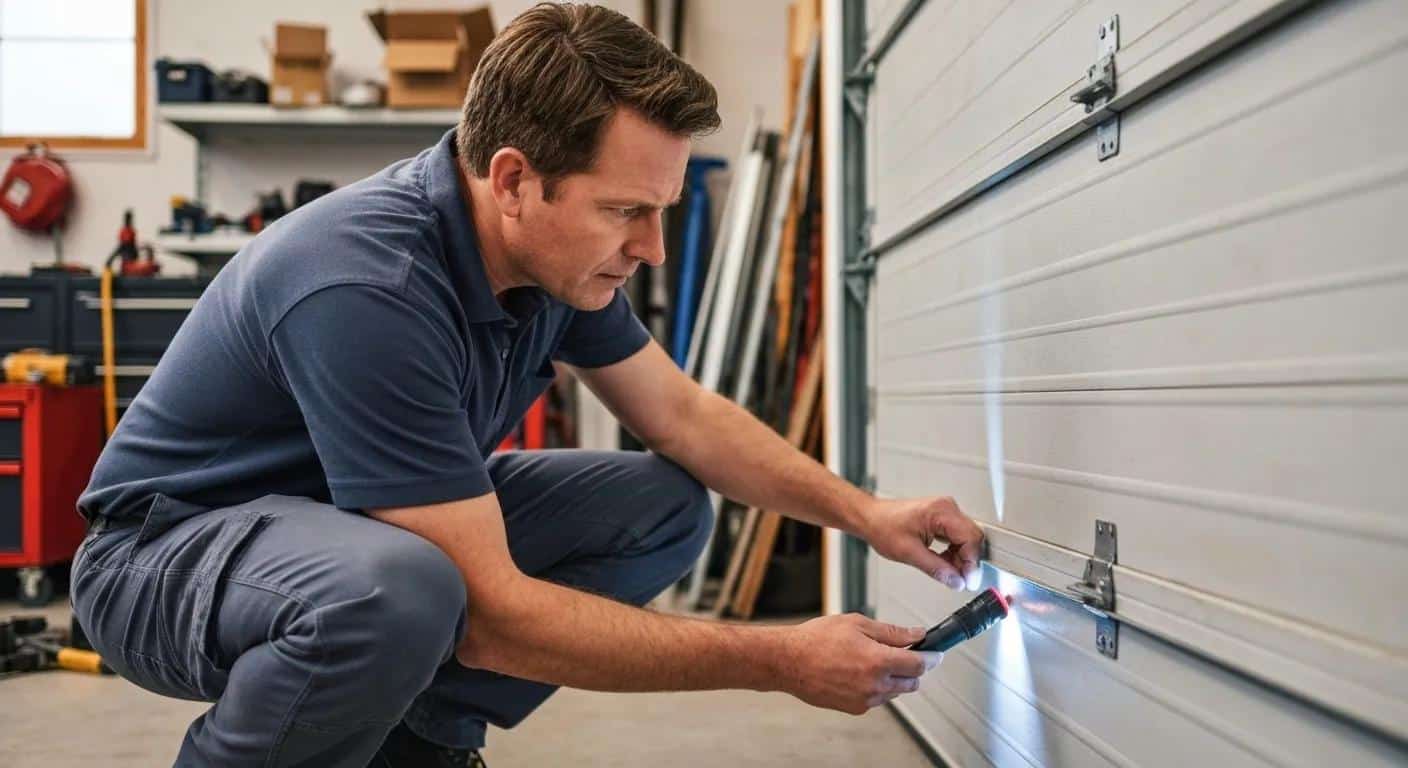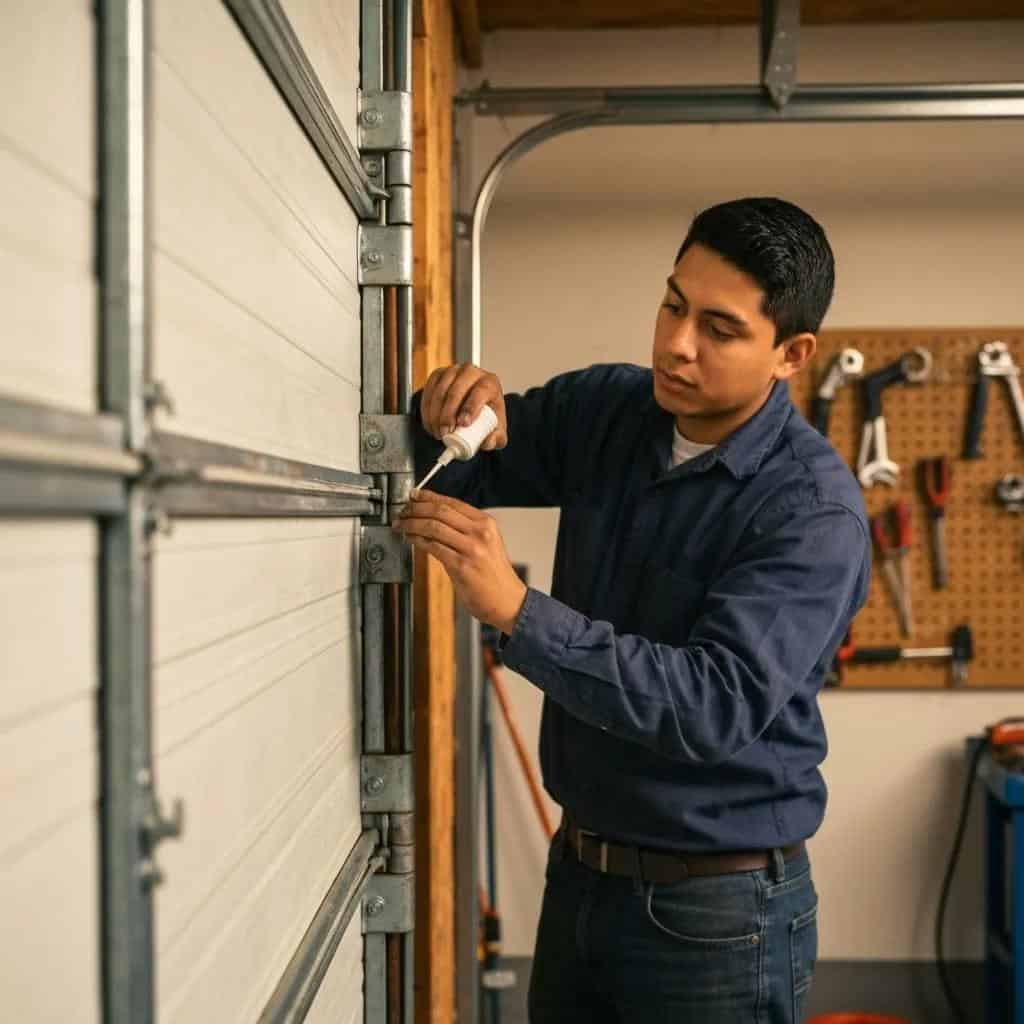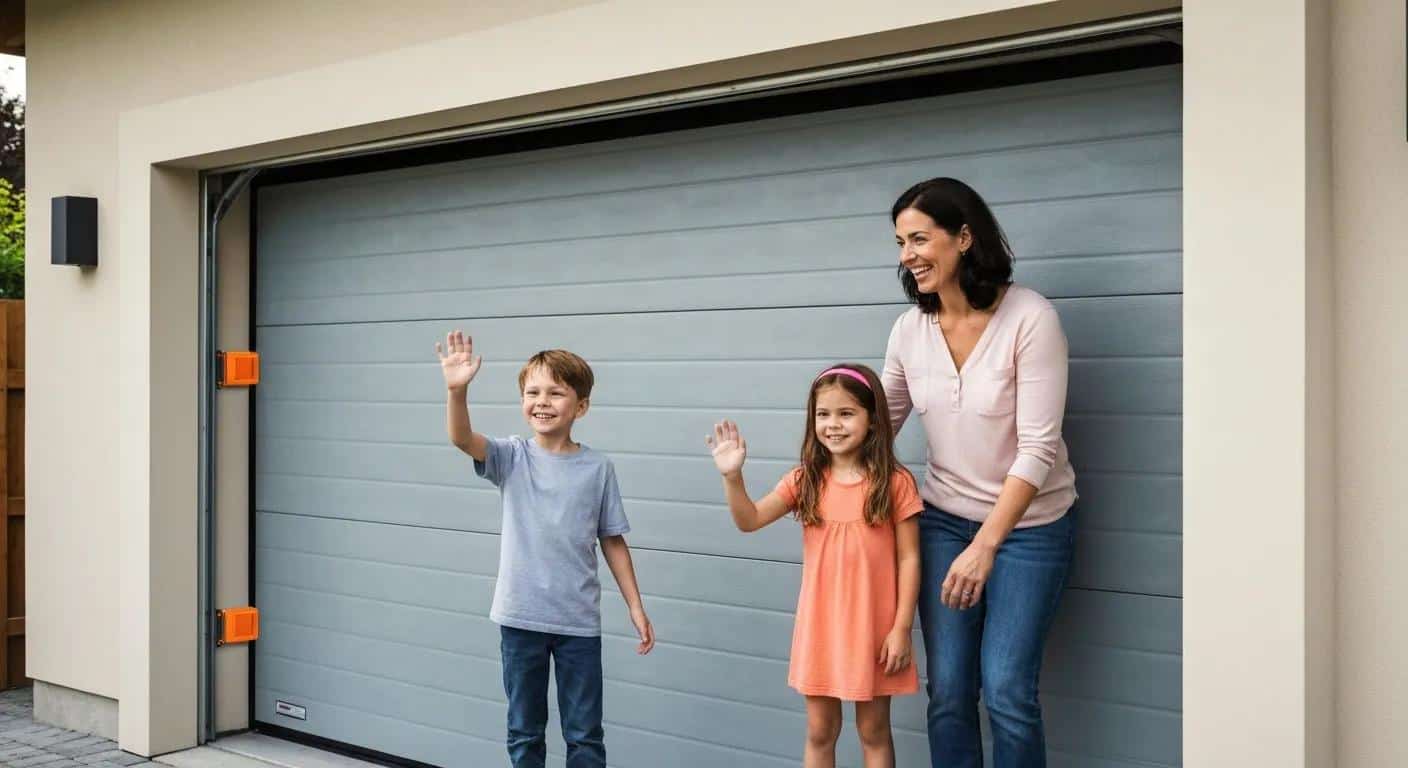Signs Your Garage Door Needs Immediate Repairs

Signs Your Garage Door Needs Immediate Repairs: Key Warning Signs and When to Call for Help
A loud bang or unexpected sag in your garage door often signals an urgent failure that can compromise safety, security, and convenience. In this guide to signs your garage door needs repairs, you’ll discover the most common warning indicators, practical troubleshooting tips, emergency failure scenarios, criteria for professional service, preventive maintenance practices, brand-specific LiftMaster opener issues, and essential safety-feature insights. By understanding these themes, homeowners, contractors, and DIY enthusiasts in the Shenandoah Valley can act decisively to protect their property and loved ones.
What Are the Most Common Garage Door Repair Warning Signs?
Garage door repair warning signs are observable symptoms that reveal mechanical wear, alignment issues, or safety-feature failures before a full breakdown occurs. Early identification of these indicators prevents costly damage, supports smooth operation, and promotes long-term reliability.
How Do Unusual Noises Indicate Garage Door Problems?

Unusual noises from a garage door—such as squeaks, grinding, or pops—result from friction, worn components, or loose hardware and prompt immediate inspection.
Common noise types include:
- A high-pitched squeak when rollers lack lubrication
- A metal-on-metal grind caused by damaged tracks
- A loud pop indicating spring fatigue or breakage
Each sound pattern highlights a specific malfunction that, if addressed early, enhances safety and prevents further component wear.
What Does Inconsistent Garage Door Movement Reveal?
Jerking, stalling, or uneven travel during opening and closing often stems from track misalignment, cable tension imbalance, or opener malfunctions.
Key movement issues include:
- Sticking at mid-cycle due to bent tracks
- Jerking motions caused by worn rollers
- Partial reversals indicating misaligned sensors
Recognizing these motion irregularities helps maintain structural integrity and avoids sudden lock-outs.
How Can Visible Damage Signal Urgent Repairs?
Visible damage—such as frayed cables, cracked panels, or broken springs—directly compromises door stability and heightens injury risk.
Signs to inspect:
- Frayed or snapping cables along the drum
- Cracks or dents in door panels undermining support
- Displaced or broken extension and torsion springs
Addressing visible defects immediately preserves component strength and prevents a catastrophic door collapse.
When Do Malfunctioning Safety Features Require Attention?

Safety sensors and auto-reverse systems prevent the door from closing on people, pets, or objects and must operate flawlessly.
Warning signals include:
- Door refusing to close despite clear path
- Inconsistent auto-reverse when encountering resistance
- Blinking or unresponsive sensor LED indicators
Ensuring accurate sensor alignment and auto-reverse response shields against accidents and legal liabilities.
What Do Remote or Wall Switch Issues Mean for Your Garage Door?
Unresponsive remotes and wall switches often point to transmitter failures, battery depletion, or control-board faults.
Typical remote problems:
- No door movement when pressing buttons
- Intermittent responses due to weak signals
- Door operation from wall switch but not remote
Timely resolution of control issues restores reliable access and maintains security protocols.
How Can You Troubleshoot Common Garage Door Issues Before Calling a Repairman?
Basic troubleshooting empowers homeowners to diagnose minor malfunctions safely and decide when professional help is necessary. Effective pre-service checks can resolve lubrication and alignment issues without equipment rental or specialized tools.
What Are Simple Steps to Diagnose Noisy Garage Door Causes?
Begin by inspecting rollers, tracks, and hinges to identify friction points, then apply a garage-grade lubricant.
Step-by-step list:
- Visually examine rollers and hinges for rust or debris buildup.
- Manually cycle the door to isolate noise location.
- Lubricate rollers, springs, and pivot points with silicone-based spray.
These steps improve component movement and often eliminate creaks and shrieks before professional intervention.
How to Identify and Fix Garage Door Opener Problems?
Opener diagnostics involve checking power, drive mechanisms, and sensor alignment to pinpoint control-unit failures.
Key actions include:
- Verifying AC power and circuit-breaker status for the opener
- Inspecting belt or chain drive for looseness or wear
- Testing sensor wiring and cleaning photo-eye lenses
Completing these checks enhances access reliability and prevents unnecessary service calls.
When Is DIY Troubleshooting Safe vs. When Should You Call a Professional?
DIY maintenance is appropriate for lubrication, sensor cleaning, and minor adjustments, but spring replacements and structural realignments require expert skills.
Compare risk levels:
These distinctions protect you from injury and safeguard the door’s mechanical balance.
What Are the Emergency Garage Door Problems That Need Immediate Professional Repair?
Emergency garage door failures pose immediate safety and security hazards and demand prompt professional response to avoid property damage or bodily harm.
How to Recognize a Broken Garage Door Spring and Its Risks?
A broken spring releases stored tension with a sharp report and makes the door feel impossibly heavy, preventing manual or automatic operation. Immediate spring replacement by a technician restores balance and safeguards against abrupt door drops.
What Does a Garage Door Cable Off Track Mean for Safety?
When a cable jumps the drum or pulley, one side of the door loses lift support, causing uneven descent and increasing risk of sudden collapse. Professional realignment and tension adjustment secure the door’s balance.
How to Identify Garage Door Falling or Sagging Signs?
Sagging occurs when springs and cables no longer counterbalance panel weight, resulting in tilted travel or uncontrolled drops. Specialist intervention readjusts spring tension and cable alignment to restore level movement.
When Do Safety Sensor Malfunctions Become an Emergency?
If sensors fail to detect obstructions or the door closes despite an object in its path, the auto-reverse feature cannot protect against crushing hazards. A trained technician must realign, test wiring, and replace faulty sensors immediately.
When Should You Call a Garage Door Repairman for Professional Service?
Professional garage door technicians handle complex repairs that go beyond DIY scope, ensuring lasting safety and reliable operation.
What Complex Repairs Require Expert Garage Door Technicians?
Advanced repairs include:
- Spring replacement and calibration to restore tension balance
- Opener motor overhaul when the drive mechanism fails
- Track realignment to correct bent or misaligned rails
These tasks demand specialized tools and expertise to maintain manufacturer tolerances.
How Does Stoneburner Inc. Serve the Shenandoah Valley with Timely Repairs?
Stoneburner Inc. – Garage Door Sales, Service and Installation
This local expertise minimizes downtime and maximizes door longevity.
What Are the Risks of Delaying Professional Garage Door Repairs?
Postponed repairs lead to creeping damage that:
- Promotes accelerated wear on springs and rollers
- Exposes property to security vulnerabilities
- Increases injury potential from sudden failures
Timely intervention preserves asset value and user safety.
How Can Preventative Maintenance Help Avoid Immediate Garage Door Repairs?
Regular upkeep extends component life, enhances performance, and uncovers minor issues before they escalate into emergencies.
AI-Powered Predictive Maintenance for Garage Door Systems
This article discusses how artificial intelligence (AI) systems are transforming garage door maintenance. By integrating smart sensors and machine learning algorithms, these systems analyze operational data to identify anomalies like unusual vibrations or sounds, predicting potential performance issues before they escalate into major failures.
This research directly supports the article's discussion on how preventative maintenance, particularly through advanced technologies like AI, can help homeowners detect and address garage door issues early, enhancing safety and extending system lifespan.
What Are Essential Garage Door Lubrication Tips?
Effective lubrication involves cleaning surfaces first and using dedicated sprays on rollers, hinges, and springs to reduce friction and noise.
Lubrication checklist:
- Wipe debris from moving parts before application
- Apply silicone or lithium-based lubricant to springs and rollers
- Cycle the door several times to distribute lubricant evenly
Consistent lubrication supports smooth operation and prevents premature wear.
How to Perform an Annual Garage Door Inspection Checklist?
A structured inspection examines all major components to ensure optimal function and safety.
This routine maintains balanced tension and reliable safety features.
When Should You Schedule Professional Garage Door Maintenance?
Schedule expert maintenance when you notice increased noise, delayed response, or after 7–10 years of operation. Regular professional tune-ups safeguard against unexpected breakdowns and comply with warranty requirements.
What Are the Signs of LiftMaster Garage Door Opener Problems?
LiftMaster openers feature electronic sensors and motor drives that can exhibit unique failure patterns requiring specialized diagnostic approaches.
How to Detect LiftMaster Opener Sensor and Remote Issues?
Identify transmitter or photo-eye faults by testing signal range, checking battery status, and cleaning sensor lenses. Faulty sensors often trigger the opener to refuse closing or to reverse unexpectedly.
What Are Common LiftMaster Opener Noises and Malfunctions?
LiftMaster units may emit:
- Grinding from worn drive gears
- Buzzing indicating motor overload
- Intermittent clicks due to relay or circuit-board faults
Promptly diagnosing these sounds prevents full motor burnout.
When to Contact Professionals for LiftMaster Garage Door Repairs?
Contact a technician when noise persists after lubrication, electronic controls fail despite power checks, or when opener diagnostics display persistent error codes. Expert service restores manufacturer-grade performance.
How Do Safety Features Affect Garage Door Repair Urgency?
Safety features such as photo-eye sensors and auto-reverse mechanisms are non-negotiable systems that demand immediate repair when compromised.
What Are the Warning Signs of Garage Door Sensor Failures?
Sensor failures become evident when the door:
- Ignores obstacles and closes fully
- Reverses suddenly without contact
- Shows inconsistent LED status on sensor housings
Each malfunction undermines protective measures and requires urgent correction.
How Does Auto-Reverse Malfunction Impact Garage Door Safety?
A faulty auto-reverse mechanism can fail to lift when obstructed, leading to crushing risks for children, pets, or vehicles. Technicians must test and recalibrate force-settings to restore safe operation.
What Are the Consequences of Ignoring Garage Door Safety Issues?
Neglected safety issues expose homeowners to:
- Increased liability from potential injuries
- Higher insurance premiums after claims
- Permanent damage to vehicles and personal property
Immediate attention to safety restores confidence and protects against serious harm.
Acting on these warning signs and best practices ensures your garage door remains a reliable, secure gateway. For expert diagnosis, repair, and maintenance across the Shenandoah Valley, trust Stoneburner Inc. to safeguard your home and business.
